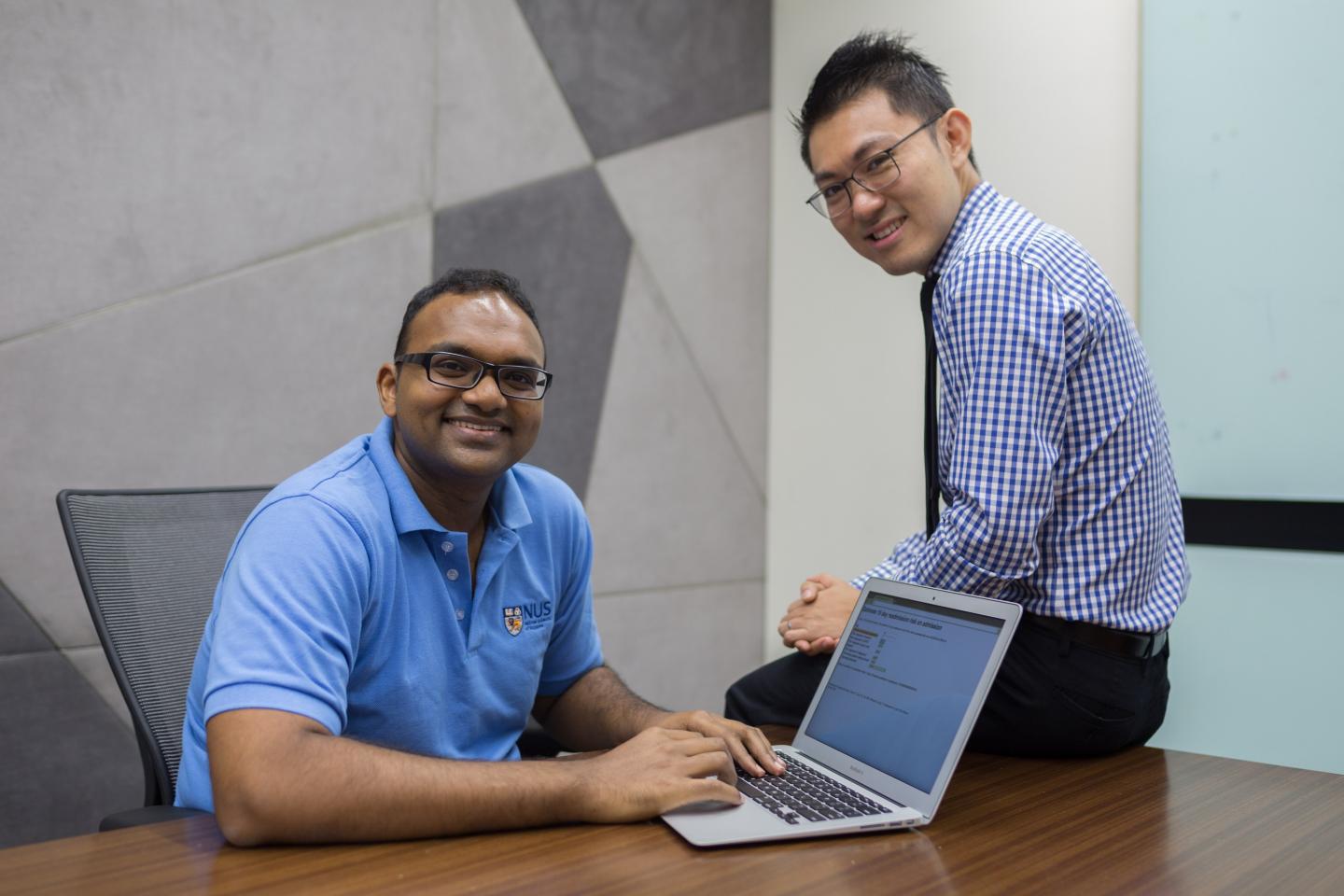
Credit: National University of Singapore
Patients who are discharged after a hospital stay will want to stay away from the hospital for as long as possible. However, in Singapore, approximately 15 per cent of patients who have been discharged from hospitals will succumb to a readmission within 30 days, while globally, readmission rates within 30 days can be as high as 20 per cent.
The good news is, studies have shown that readmissions within 15 days of a patient's discharge are often preventable. To identify patients who are most likely to benefit from interventions, a team of researchers from the National University of Singapore (NUS) developed a novel web-based tool that predicts a patient's 15-day readmission risk, taking into consideration various risk factors.
"Hospital readmissions place immense strain on the healthcare system. By cutting down the number of preventable readmissions, hospital-related healthcare costs can be significantly reduced. Our simple tool helps healthcare teams identify high-risk patients and facilitates the administration of targeted interventions for these patients – during admission or post-discharge – to reduce readmission rates," explained Associate Professor Alexandre Chan from the Department of Pharmacy at the NUS Faculty of Science, who supervised the project which was carried out by Mr Sreemanee Raaj Dorajoo, a PhD candidate from the NUS Department of Pharmacy.
The tool was tested using data from 621 patients who had been discharged from the Singapore General Hospital and Khoo Teck Puat Hospital Singapore between August and September 2015.
The development and validation of the predictive model was first published online in the journal Pharmacotherapy in January 2017.
Cutting down hospital readmissions
Studies have shown that early readmission (within seven days or less) is more likely to be causally related to the preceding admission episode. Hence, such readmissions may be more amenable to risk modification. In contrast, late readmissions (between eight and 30 days) have been shown to be associated with morbidities and social determinants, which may be less amenable to interventions by providers.
"In this study, we looked at 15-day readmissions because studies have shown that this is the optimal cut-off for identifying potentially preventable readmissions. The web-based system instantaneously calculates the likelihood of readmission based on the presence of risk factors – such as age, presence of pre-existing conditions, number of discharge medications, discharge destination and evidence of premature discharge against medical advice – and the weightage attached to them. This tool can be used during the patient's stay in hospital so that appropriate interventions, if necessary, can be administered in a timely manner," said Mr Sreemanee.
He added, "Our model helps to identify patients who are at high risk of an early readmission. These patients are most likely to benefit from interventions such as specialised discharge planning, medication counselling, caregiver training or placing patients on a home visit programme. In this way, the overall effectiveness of such interventional programmes can be enhanced."
Risk factors and prevention
The NUS study found that the number of medications prescribed at discharge was significantly associated with 15-day readmission risk. Interestingly, for each additional medication prescribed, the risk of 15-day readmission increases by about 6 per cent.
"The practice of prescribing additional medications for discretionary use, for example mild or moderate pain, nausea and constipation, could prove counterproductive in some patients as the added complexity in the medication regimen may lead to confusion and potential errors during self-administration. The likelihood of medication non-compliance also increases with the number of medications prescribed which could in turn lead to readmission. Timely and targeted medication counselling as well as educational initiatives to help patients understand the importance of medication adherence can go a long way to improve overall patient outcomes, including readmission risk reduction," Assoc Prof Chan said.
The study also found that patients discharged to nursing homes had higher readmission risks. "Patients discharged to nursing homes typically require a higher degree of post-discharge care. Ensuring that patients enter appropriate care facilities is therefore an important consideration in stemming the cycle of readmissions," Assoc Prof Chan added.
Future plans
The research team hopes that the use of the web-based calculator could pave the way for the development of targeted invention programmes for patients to reduce readmission rates. In addition, the team is fine-tuning and validating the accuracy of the web-based tool. Discussions are also underway to integrate the web-based calculator into the existing electronic medical records system of healthcare providers in Singapore.
###
Media Contact
Carolyn Fong
[email protected]
65-651-65399
@NUSingapore
http://www.nus.edu.sg/
############
Story Source: Materials provided by Scienmag





